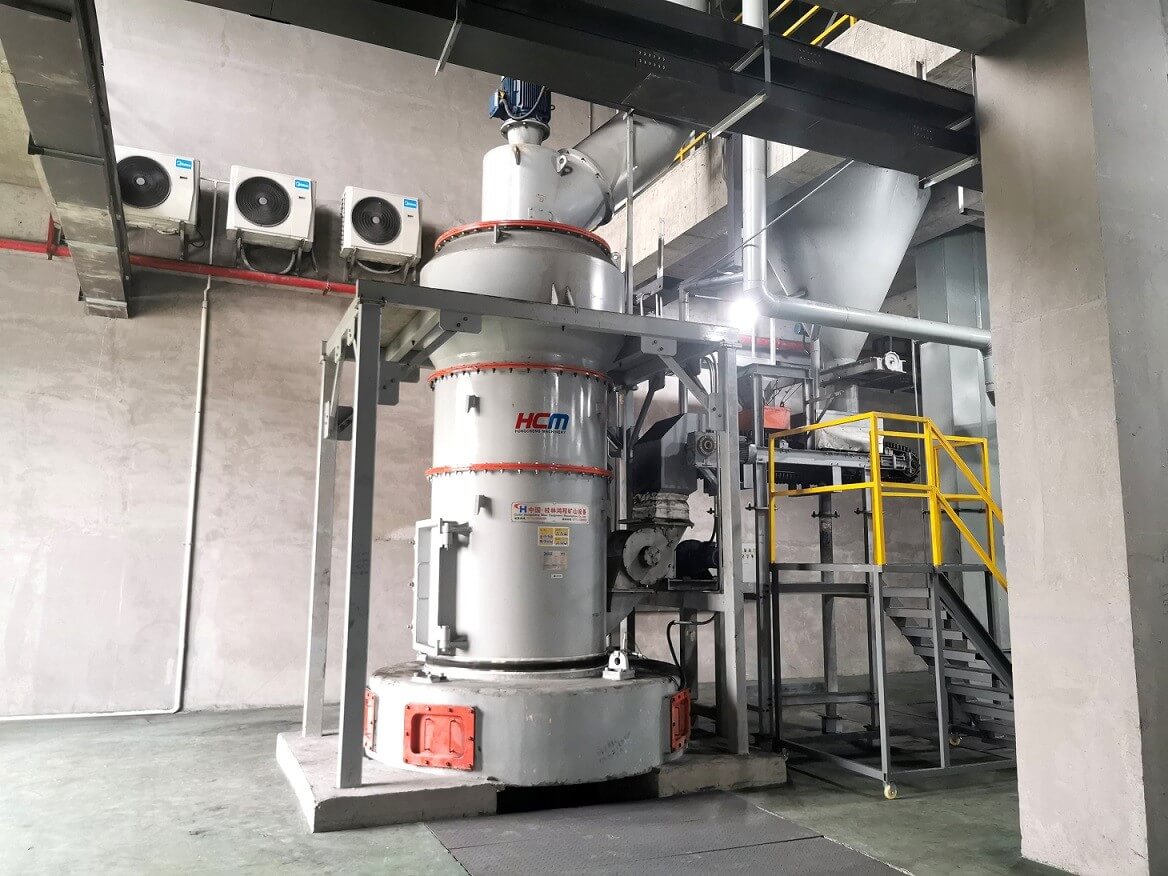Guilin Hongcheng is a manufacturer of limestone Raymond mills. Our limestone Raymond mills have been widely used and recognized in limestone grinding projects. Today, I will introduce to you the technological process of grinding limestone by limestone Raymond machine.

Limestone Raymond Mill, welcome to leave a message or consult [email protected]
Limestone is the main raw material for the production of cement, concrete coarse and fine aggregate, lime, etc. Its crushing and grinding generally adopt dry process, and the corresponding process is selected according to different application fields:
1. For the limestone used in metallurgy and road construction, generally the ore can be crushed and screened.
2. For the 246-43μm fine powder products used as feeding additives and ordinary fillers, the ore is generally crushed by a particle crusher, hammer crusher, impact crusher, etc., and then directly crushed with a limestone Raymond machine, vertical mill, Roller mill, impact mill and other grinding.
3. For ultra-fine limestone powder and high-grade fillers used in flue gas desulfurization, it is generally necessary to carry out ultra-fine grinding and fine classification, and the process equipment is basically the same as that of calcite ultra-fine grinding.
At present, most of the limestone powder used in the building materials industry is to grind limestone or stone chips generated during the production of aggregates to make the fineness meet the specified requirements.
Limestone grinding process mainly includes two types:
1. Open circuit process: after the material passes through the mill once, it is used as a finished product for the next step of operation;
2. Closed-circuit process: After the material leaves the mill, it goes through one or more stages of sorting, the fine particles are taken as the finished product, and the coarse particles are returned to the mill for re-grinding.
The open circuit process is relatively simple. It has the advantages of less equipment, less investment, and easy operation. However, because the materials need to meet the fineness requirements before they can be ground, over-grinding is prone to occur, and the finely ground materials tend to form a cushion layer, which hinders the further grinding of coarse materials, greatly reduces the grinding efficiency and increases power consumption. Therefore, most limestone powder manufacturers currently choose a closed-circuit process, which can reduce over-grinding, improve mill efficiency, and reduce energy consumption. In addition, the limestone powder produced by the closed-circuit process has a uniform particle size and is easy to adjust to meet different fineness requirements. The closed-circuit process produces limestone powder, and the limestone Raymond machine is usually selected as the main grinding equipment.
Limestone Raymond mill grinding process: Limestone falls to the belt conveyor through the funnel at the bottom of the silo, and then is sent into the mill for grinding. Because the grinding roller is tightly rolled on the grinding ring under the action of centrifugal force, the material is scooped up by the spatula and sent to the middle of the grinding roller and the grinding ring, and the material is broken into powder under the action of the grinding force. The powdered material is blown out under the action of the fan, and is classified by the classifier above the mill. The classifier is composed of a radial radial blade wheel and a transmission device. The blade wheel is driven by the transmission device to rotate at a certain speed, and the coarse particles in the airflow are blocked and dropped back for grinding. The fine powder is sent to the Cyclone separator, so the classifier plays a screening role. By adjusting the air volume or changing the speed of the blade wheel, the particle size of the powder can be adjusted freely. The cyclone separator separates the qualified products from the air, and the finished products are transported to the finished product warehouse by the bucket elevator through the pipeline, and the air flow is returned to the blower by the return air pipe for recycling. The material contains a certain amount of water, and a certain amount of water vapor will be generated during grinding, and the entire pipeline is not completely sealed so that a certain amount of external air is sucked in, which increases the circulating air volume of the system. In order to ensure that the mill works under negative pressure, the excess air volume After entering the bag filter for purification, it is discharged into the atmosphere.
The above is the limestone Raymond mill grinding process, and it is also the grinding process widely used by limestone powder manufacturers. If you have purchase needs of limestone Raymond machine, welcome to leave us a message to learn about the limestone Raymond machine grinding process.